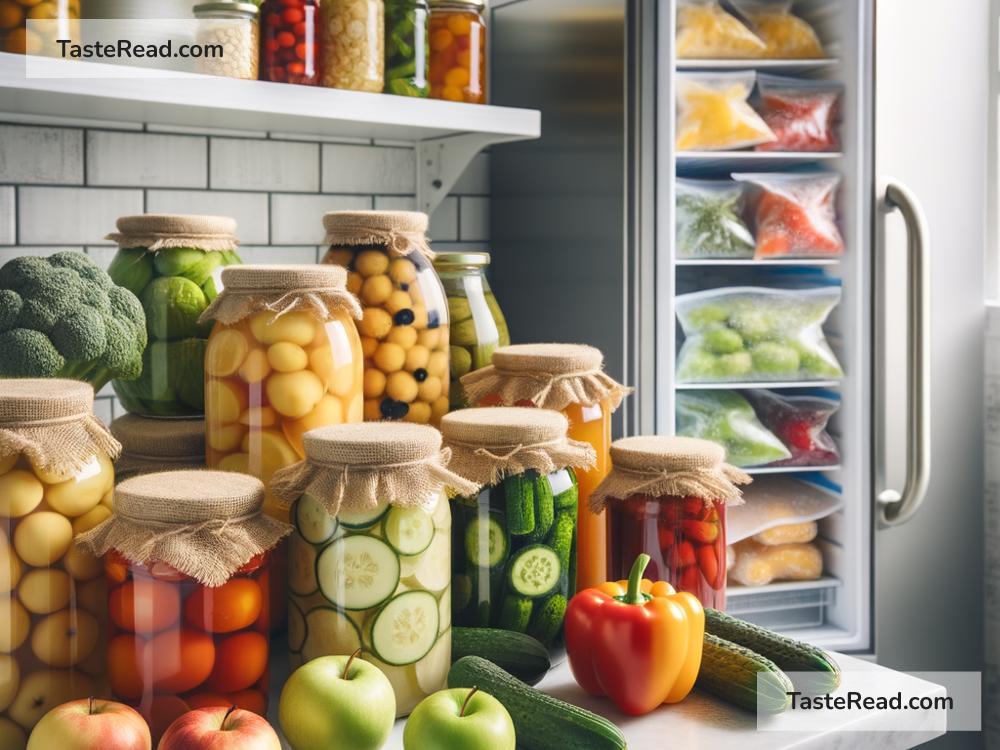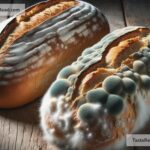The Science of Food Preservation: Canning and Freezing
Have you ever wondered how jam stays fresh in a jar for months or why frozen peas taste great even after being stored in your freezer for weeks? It’s all thanks to the science of food preservation! In this article, we’ll explore two popular methods of preserving food: canning and freezing. By the end, you’ll have a better understanding of how these techniques work and why they’re so useful.
Why Do We Need to Preserve Food?
Food preservation is all about keeping food safe to eat for longer periods of time. Fresh food like fruits, vegetables, and meat can spoil quickly due to bacteria, mold, and other microorganisms. These tiny organisms break down food, causing it to smell bad, change color, and lose its taste. More importantly, spoiled food can make you sick!
Preserving food helps prevent spoilage and keeps it tasting fresh. It also lets us enjoy foods that aren’t always in season, saves money by reducing waste, and makes sure we have a supply of food when we need it.
The Basics of Canning
Canning is a way to preserve food by sealing it in airtight containers, usually jars. This process protects food from air and bacteria, which are key reasons food spoils. The technique was invented over 200 years ago and is still widely used today.
How Does Canning Work?
The science behind canning involves heat and airtight seals. Here’s how it works:
-
Preparation: First, food is cleaned and sometimes cooked. Fruits, vegetables, soups, and even meats can be canned!
-
Filling and Sealing: The food is placed in glass jars or cans. The containers are sealed with lids to prevent air from getting in.
-
Heating: The sealed jars are heated to a high temperature, usually in boiling water or a pressure canner. This step kills bacteria, mold, and yeast that would otherwise spoil the food.
-
Cooling and Storing: Once cooled, the jars create a vacuum seal, meaning no air can enter. This airtight seal traps freshness and stops microorganisms from growing back.
Types of Canning
There are two main methods of canning:
-
Water Bath Canning: This is used for acidic foods like fruits, tomatoes, and pickles. The acidity helps prevent bacteria from growing, so all that’s needed is boiling water to preserve the food.
-
Pressure Canning: This is for non-acidic foods like vegetables, meats, and beans. Since these foods are less acidic, they need higher heat to kill bacteria. A special pressure canner is used to heat them to temperatures above boiling.
Why Does Canning Work?
The heat kills harmful microorganisms, while the airtight seal keeps them out. Without bacteria or mold, the food stays safe and flavorful for months—or even years!
The Basics of Freezing
Freezing is another simple and effective way to preserve food. It works by slowing down the activity of bacteria and enzymes that cause food to spoil. Freezing doesn’t completely stop food from breaking down, but it dramatically slows the process.
How Does Freezing Work?
Freezing lowers the temperature of food to below freezing point (32°F or 0°C), which stops bacteria and other microorganisms from multiplying. Here’s the basic process:
-
Preparation: Fresh food is cleaned, chopped, and sometimes blanched (quickly boiled) to maintain quality. For example, blanching vegetables before freezing can help preserve their color and texture.
-
Cooling: The prepared food is placed in freezer-safe containers or bags and quickly frozen. The faster the food freezes, the better its quality. Slow freezing can cause ice crystals to form, which can damage the texture of the food.
-
Storage: Frozen food can be stored for weeks or months as long as it stays at a consistent, low temperature. Freezing doesn’t kill bacteria, but it does keep them inactive until the food is defrosted.
Why Does Freezing Work?
Freezing works by stopping the chemical and biological processes that cause food to spoil. At freezing temperatures, bacteria, mold, and yeast become dormant, meaning they don’t multiply or break down the food.
Canning vs. Freezing: Which Is Better?
Both canning and freezing are great ways to preserve food, but they have their pros and cons:
-
Canning: This method doesn’t require electricity for storage, so food can be kept in your pantry. However, canning takes more time and effort and requires special equipment for pressure canning.
-
Freezing: Freezing is easier and faster than canning, but it requires space in your freezer and a reliable electricity supply. Frozen food also has a shorter shelf life than canned food.
Ultimately, the choice depends on your needs, the type of food you want to preserve, and how much effort you’re willing to put in.
The Importance of Food Preservation
Canning and freezing may seem like old-fashioned techniques, but they’re still important today. They help reduce food waste, save money, and ensure that we always have access to safe, nutritious food. Plus, they allow us to enjoy seasonal fruits and vegetables all year round.
Whether you’re making homemade jam, freezing leftovers, or stocking up on frozen veggies, the science of food preservation has your back. Next time you grab a jar from the pantry or something from the freezer, take a moment to appreciate the science at work!
Preserving food is a fascinating blend of chemistry, biology, and ingenuity. By understanding the basics of canning and freezing, you can keep your food fresh and delicious while reducing waste and saving money. So why not give it a try? Your pantry and freezer are waiting!


